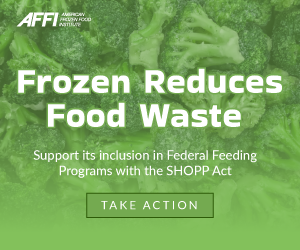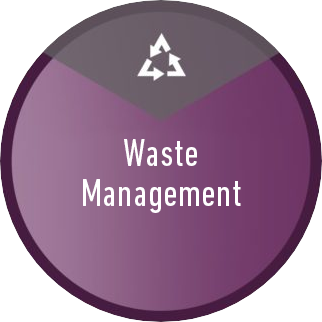Water Management
Water Management
This section provides resources and guidelines to manage agricultural water by conducting hazard analyses of water used on farms and processing facilities, selecting appropriate water sources, and treating water before use to prevent and control enteric virus contamination at different stages of fruit production.
Post-harvest: Resource materials include management of personnel, proper clean-up and disinfection methods, and food handling education and training materials.
Water Management Recommendations
Recommendations
To download these free resources, please login as an AFFI member or create a non-member profile first.
Agricultural Water Contamination
Pre-Harvest
If the water test results indicate possible fecal contamination (e.g.: high count of fecal coliforms), test agricultural water for Hepatitis A virus (HAV) and Norovirus (NoV).
1. Establish sampling method and frequency considering the source of water, history of water quality, water distribution system, the intended use of water and if the water is contacting the fruit.
2. If enteric virus is detected in water, hold activities involving the contaminated water, repeat the water test to look for source of contamination and confirm the presence of virus.
3. Consider changing water source and notify local health authorities.
Agricultural Water Treatment
Pre-Harvest
Treat water before use if the water does not meet the potable water standard required by local regulation or with WHO recommendations.
1. Microbial standard of agricultural water as per FSMA (in the proposed microbial standard of agricultural water): The geometric mean is not to exceed 126 colony forming units (CFU) of generic E. coli per 100 mL and the estimate of the statistical threshold value (STV) of samples must not exceed 410 CFU of generic E. coli in 100 mL of water.
Chemicals and Sanitizers for Washing Fruits
Post-Harvest
Follow scientifically valid chemical concentration and contact time parameters for washing fruits (parameters can be based on regulation, industry guidance and/or scientific studies). For example, sodium hypochlorite concentration should not exceed 200 ppm free chlorine when used as sanitizing solution according to CFR title 21, Chapter I, Subchapter B, Part 178. In the USDA Good Agricultural Practices and Good Handling Practices Audit Verification Program, chlorine is mentioned to be added to water for post-harvest treatment of fresh produce at 50 -200 ppm total chlorine for 1 to 2 minutes.
Guide to Minimize Microbial Food Safety Hazards (FDA)
1. Always adapt the concentration and contact time as prescribed for each type of fruit.
Fecal Contamination of Agricultural Water
Pre-Harvest
Human enteric viruses are possibly present in any kind of water contaminated by human fecal material and by sewage, and can survive for a long time in water, soil, surfaces, fruits and vegetables.
1. Allow sufficient time (e.g.: 21 days to the harvest schedule for leafy greens) between irrigation and harvest to ensure an appropriate decline in pathogen populations.
2. In absence of scientific studies on microbial die-off rate, consider using suggestions in the FSMA Microbial standard of agricultural water (0.5 log per day) or implementing microbial reduction activities after harvesting, such as washing. Above mentioned die-off rates are for bacteria, it is hard to conclude a decay rate for enteric virus for all fresh procedure because the experimental conditions and results varied.
Hazard Analysis of Agricultural Water
Pre-Harvest
Conduct a hazard analysis of water used in the farm(s) and processing facility by asking relevant questions such as:
Agricultural Water Risk Assessment (AFFI)
Assessing Risk of Pre-Harvest Agricultural Water (United Fresh)
Agricultural Water System Assessment
1. Identify the source of the water
2. Assess microbial and chemical quality of water (general cleanliness)
3. Review any regulatory tests and results pertaining to water quality
4. Identify potential indicators upstream of water source
5. Characterize potential causes of contamination and impact
INSPECTION OF AGRICULTURAL WATER SOURCE AND DISTRIBUTION SYSTEM
Pre-Harvest
Ensuring that water distributed to the processing facility is safe and clean during the season
An Example of Agricultural Water Risk Assessment (United Fresh)
Improving On-Farm Food Safety Through Good Irrigation Practices (Ontario, Canada)
1. At least once per year inspect water source and storage and distribution equipment to identify possible sources of contamination. The inspection should be prior to the last application of water (such as irrigation and plant protection products dilution). Additional inspection and tests are needed if water quality is likely affected, for instance, after flood. hurricane, etc.
2. Reduce the vulnerability of the water supply by conducting routine verification of microbial water quality
INSPECTION OF HARVEST WATER SOURCE AND DISTRIBUTION SYSTEM
Harvest
Inspect the water source and water distribution system for any possible contamination including animal and pest activities, trash, debris, accumulation of rotten fruits.
Managing Organic Waste Materials on Farm and in Processing Areas
Post-Harvest
Residual organic matter such as rejected fruits, cut parts of the harvest, etc., generated from cleaning and processing activities can become a source of contamination
2. These areas should be routinely cleaned and/or disinfected.
3. Avoid accumulating and holding organic waste for more than a day as this increases the risk of contamination.
Monitoring Microbial Quality of Processing Water
Post-Harvest
Monitor the microbial quality of processing water in direct contact with fruit periodically.
1. When test results indicate fecal contamination, test the water for Hepatitis A virus (HAV) and Norovirus (NoV).
2. If virus contamination is confirmed, consider change water source, hold activities involving water, and notify health authorities.
Sources of Agricultural Water
Pre-Harvest
Use potable water from closed water sources for irrigation and application of crop protection products whenever it is possible.
1. The source of potable water is preferably from municipal systems or wells.
2. Monitor the water microbial quality regularly to ensure the safety of water.
Types of Irrigation
Pre-Harvest
Prevent contact between harvestable crops and the water (use drip irrigation versus overhead aerial spray).
1. Drip irrigation is prefered as water is unlikely to touch fruits.
– Furrow irrigation represents medium risk AND – Sprinkler is the riskiest irrigation methodUse of Wash Water in the Facility
Harvest
Wash water used for cleaning and rinsing equipment, utensils or tools should meet potable water standards.
Washing of Produce
Post-Harvest
Use an appropriate washing method to reduce the microbial load on fresh produce.
1. For produce not easily bruised or injured, immersion bath is generally preferred than sprays due to the better surface coverage.
2. If an immersion tank is used, the wash water in water tank shall be replaced regularly to avoid cross-contamination from one batch to another.
3. Water quality should be maintained to not to introduce contamination in all washing systems.
4. To decide when to refresh water, either measure turbidity or monitor the water visually with a clearly defined criteria (e.g.: a photo of water with organic matter build-up that need refreshing).
5. If possible, use a series of washes with antimicrobial chemical to achieve a better result.
Water Storage
Post-Harvest
The storage unit of water must be maintained and disinfected regularly to ensure the good microbial quality of water.
Water Testing During Harvest Operations
Harvest
Test water for bacterial indicators (such as E.coli, fecal coliforms or total coliforms). Frequency of water test varies depending on the water source, history of water quality, intended use of water and if water is in contact with fruits. When test results indicate fecal contamination, test the water for hepatitis A virus (HAV) and norovirus (NoV). If virus is detected, stop activities involving water (such as equipment sanitation and harvesting), repeat the water test to look for source of contamination and confirmed the presence of virus. Consider changing water source and notify local health authorities.
Water used during Harvest Operations
Harvest
Any ice or water used in relation to harvest or cooling should meet microbial standards for drinking water and should be handled under hygienic conditions to prevent contamination.
Water used for Post-Harvest Operations
Post-Harvest
Use potable water for all cleaning and washing activities.
1. If potable water is not available or water is recirculated, treat the water with effective disinfectant before using, such as chlorine or ozone.
2. Untreated surface water must not be used for any activities post-harvest.
3. Monitor the microbial quality of treated water and the concentration of disinfectant added frequently to prevent the wash water to become the source of contamination.
4. When measuring the concentration of disinfectant, choose a method that can give a value of concentration, such as titration or colorimeter instead of test strips which can only estimate a range of concentration.
Water used in Wash Tanks
Post-Harvest
Water used in the wash tank (dump tank) should be warmer than the fruit being washed so as to reduce the infiltration of wash water into the fruit. When infiltration occurs, cold water creates air pockets within the produce which lead to a pressure differential that pulls water into the produce, microorganisms in wash water may be pulled into spaces inside the produce and subsequent washing steps will not be able to reduce these microorganisms.
Guide to Minimize Microbial Food Safety Hazards (FDA)
GAP and GHP Audit Verification Program (USDA)
Infiltration of Pathogens through Water (UMass-Amherst)
1. Monitor the temperature of water to ensure it is always warmer than fruit being washed or cool the fruit before washing.










